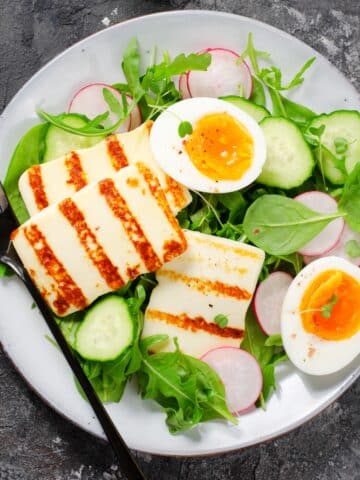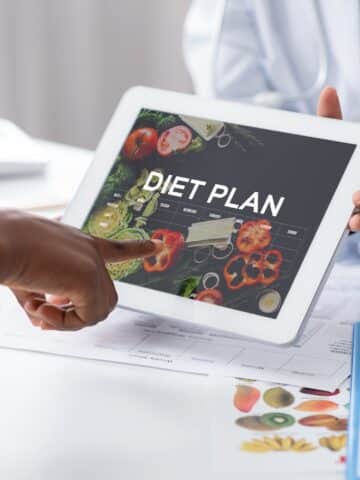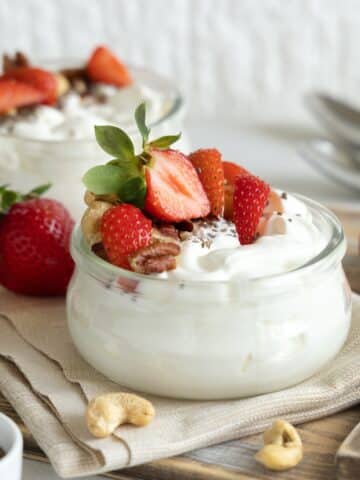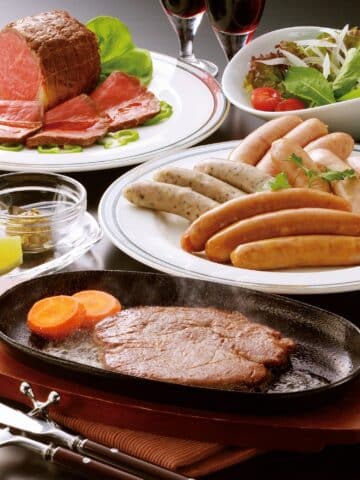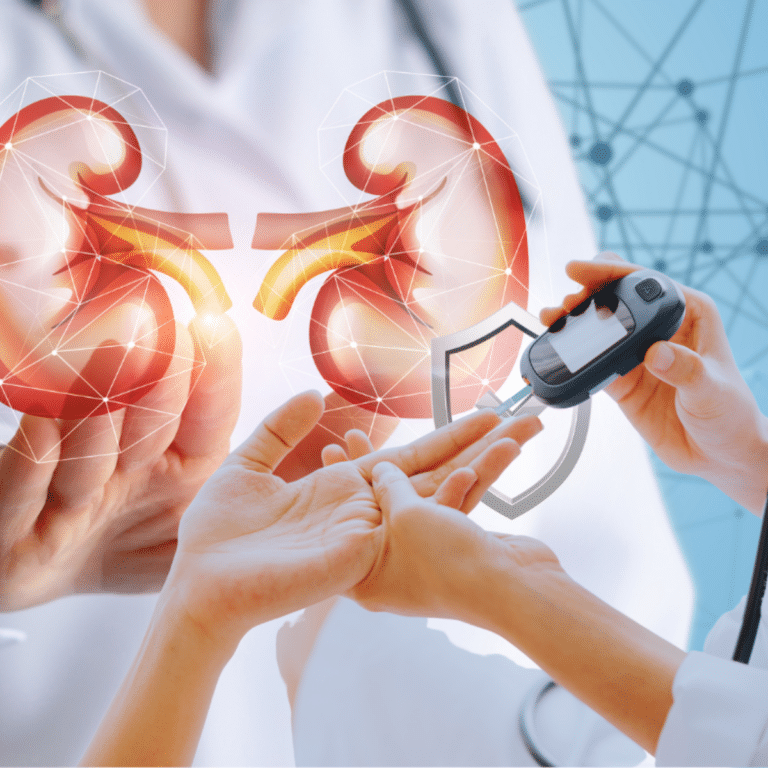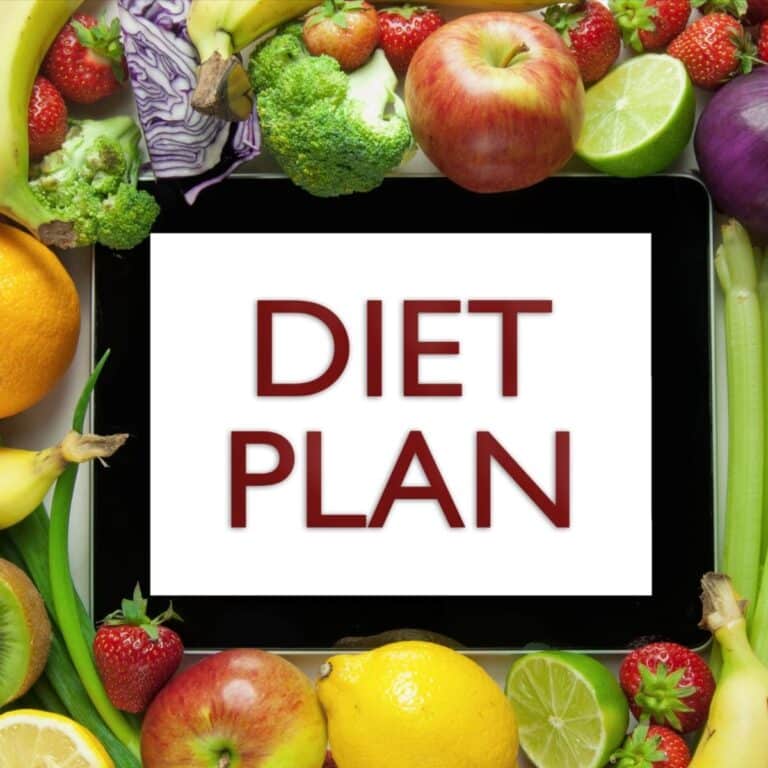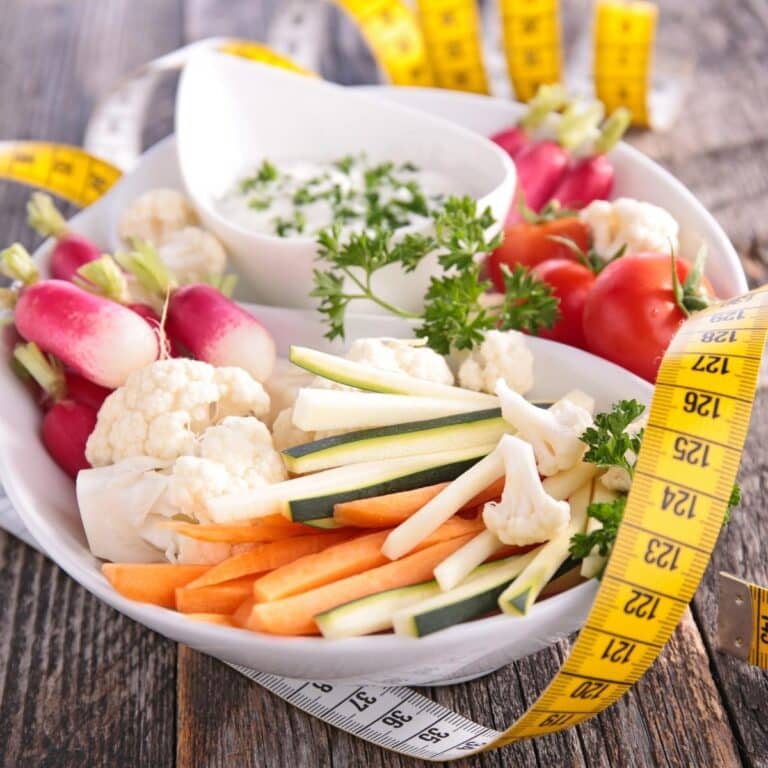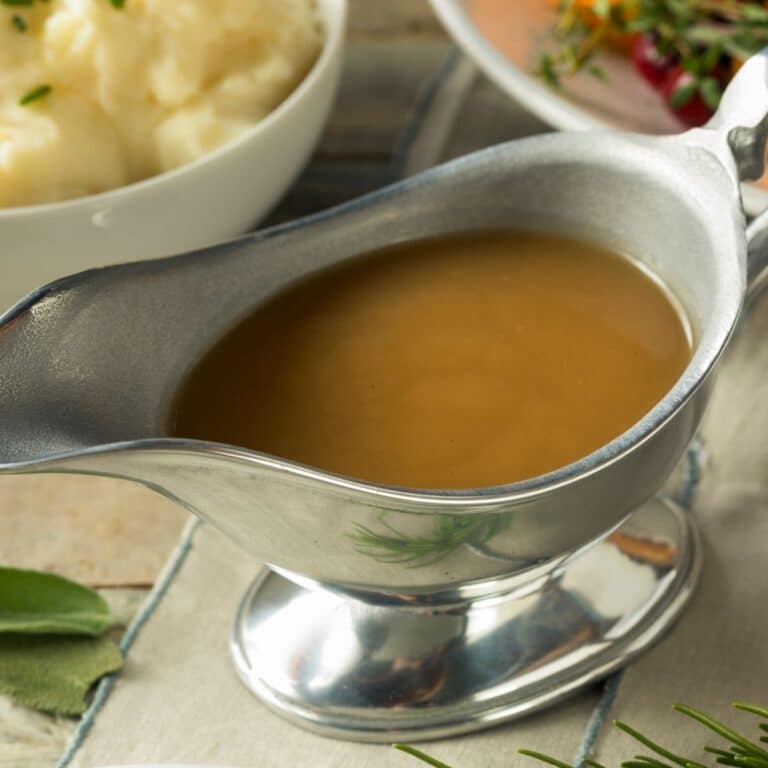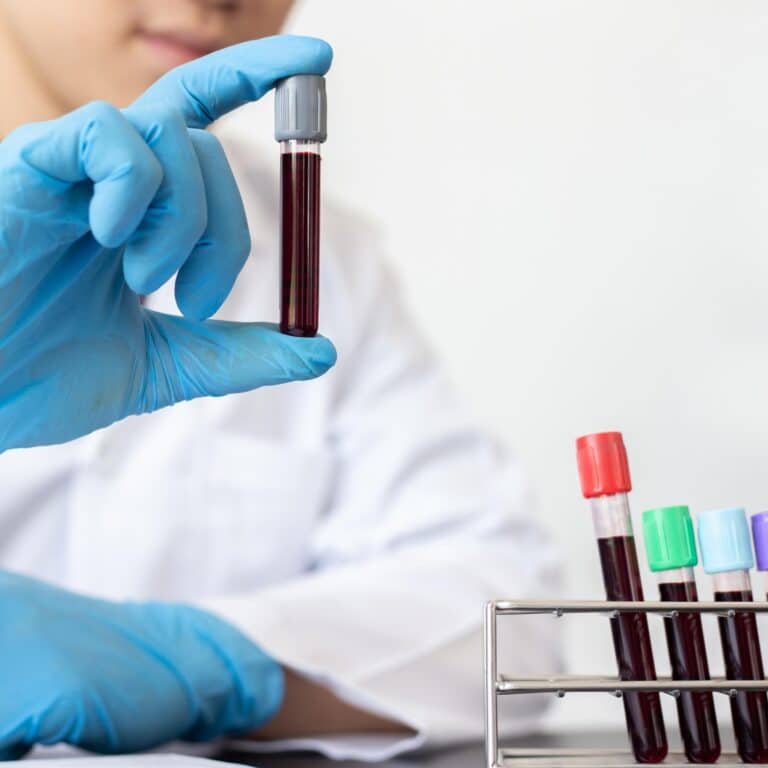What Can I Eat For Lunch On A Renal Diet
Maintaining a healthy, kidney-safe, diet for chronic kidney disease is important for so many reasons. First and foremost, your overall comfort and health are at stake. What you might not know is that you can actually alter the rate of progression for your chronic kidney disease simply by sticking to a strict healthy diet.
While you cannot heal the damage done to your kidneys already, you can slow or even stop the progression of your disease with major dietary changes. So while a cheeseburger, fries, and a milkshake might not seem like such a bad idea at the time, you really want to make better decisions on a regular basis.

The key to having tasty lunches on a renal diet lies in understanding which types of foods to avoid and which ones to include.
Depending on your stage of kidney disease, you have certain restrictions based on your individual needs, such as limiting excess sodium, phosphorus, and potassium intake. Knowing these guidelines can help you make informed decisions about your meals without sacrificing flavor or nutrition.
Finally, if you're looking for easy-to-prepare recipes or meal ideas tailored specifically for those on a renal diet, don't worry; there are lots of resources online and in cookbooks designed just for you. You can also check out these kidney diet meal prepping tips.
Whether you’re looking to whip up something fast or want something more elaborate, you'll find plenty of inspiring recipes here so that every day can feature an enjoyable lunch no matter what dietary restrictions apply. Let's explore how to choose the perfect nutrient-rich meal while adhering to your doctor’s recommendations.
Jump to:
- Eating Lunch On The Go With CKD
- Easy On The Go Lunches for CKD
- How Do I Use Leftovers For The Next Day?
- What Fast Food Options Are Good For Lunch On A Renal Diet?
- What Frozen Meal Brands Are Best For CKD Patients?
- Are Smoothies Or Other Liquid Drinks Good For Lunches?
- Nutrition Bars That Make Great Lunch Meals
- What Should I Know About Food Safety With Bringing My Lunch?
- Lunches for CKD FAQs
- Enjoy Lunch Meals With Your Renal Diet
Eating Lunch On The Go With CKD
You're probably used to trying to figure out renal diet breakfast lunch dinner. For those on a renal diet, eating lunch on the go can be challenging. With careful meal planning and food safety tips in mind, it’s possible to have delicious lunches that are CKD-friendly.
Start by looking at daily diet restrictions such as limiting high potassium foods like bananas or potatoes. Salads with leafy greens, cucumber slices and other vegetables make an excellent light lunch option.
A sandwich made with whole grain bread topped with lean protein is also a safe choice for people with kidney disease. If you're going out to eat, avoid items with creamy sauces which contain too much sodium and ask your server if they offer lower potassium options.
When packing your own meals for work or school, remember to always practice good hygiene when handling food and use separate storage containers for different types of food.
These simple steps will help ensure that you enjoy healthy meals without compromising food safety while living with CKD.
For More Recipes and Ideas --->> Get Your Free Meals and Recipes That Are Perfect for Pre-Dialysis Diets, Pre-Dialysis with Diabetes, or Dialysis Diets.

Easy On The Go Lunches for CKD
What you need are some quick and easy on the go lunch ideas that can work for every day, no matter how busy you are.
Bento Boxes
A bento box is a new trend in lunch boxes that works for kids and adults alike. You can find bento box lunch boxes in almost any department store or online, or you can put together your own kind of bento style lunch. The idea behind the bento boxes is small servings of many different items.
These are great tools to use to help you eat healthy, especially since it is hard to get bored with a bento style lunch. Your bento box lunch can be full of easy and health finger foods, so they are easy to eat at your desk. Baby carrots, apple slices, pinwheel sandwich slices, berries (are strawberries kidney friendly?), and other small finger food type items are perfect.
And, if you can't get a bento, you can use cupcake wrappers to help divide food in a steel lunch box to keep things cool, varied, and secure. It's a really good option if you're not good at picking just one thing to eat.
Wraps
Wraps are great! They're an easy and versatile lunch item that is quick to put together, and you can use almost anything to put together a great lunch wrap. Use your leftover turkey or chicken breast, lettuce, onion, bell peppers, and whatever other favorite healthy additions and wrap them up in a flour tortilla.
These are so quick and easy, you can make them the night before, the morning of, or just bring your CKD-friendly ingredients and build your wrap right there on the spot.
Salads
Salads are not only super healthy, but they are also quite versatile. You can put just about anything in a salad and it will be delicious. Starting with a simple base of healthy vegetables like spinach, kale, and romaine lettuce add in your favorites like onion, carrot, radish, bell peppers, and more.
Then top off your basics with your leftovers from last night, such as chicken breast or even turkey meatballs leftover from spaghetti night. Also try your favorite low nitrate deli meats, dried berries, and more. You can also give these low sodium spaghetti squash recipes a try!
How Do I Use Leftovers For The Next Day?
When it comes to a nutrition plan, you may be wondering what leftovers you can take the next day for lunch. Eating healthy is key and luckily there are plenty of options that follow your dietary restrictions while still being tasty and satisfying. You can manage portion sizes so much better when you create a plate ahead of time and take it to your work the next day.
Foods low in sodium and phosphorus, with no added sugar or preservatives should be prioritized. Deli meats, grilled chicken, roasted vegetables, quinoa salad and brown rice are all great choices for creating meals with leftovers.
Once identified, portion out any leftover food into individual containers so they’re ready to grab-and-go when packing up lunch for work or school.
When reheating these foods, always microwave on medium heat until it reaches 165 degrees Fahrenheit (73°C) before eating them.
It's also important not to forget about adding fruits like apples or oranges which contain crucial vitamins and minerals to your leftover meals.
Preparing nutritious balanced lunches with leftovers doesn't have to be difficult - just remember the basics: stay away from processed meat products, choose fresh produce over canned items whenever possible. You can always consider fresh or canned vegetables for a renal diet.
Watch out for hidden sodium levels in sauces and condiments, and don't hesitate to add flavor by tossing in herbs and spices!
What Fast Food Options Are Good For Lunch On A Renal Diet?
When it comes to fast food options, there are a few things you can do to make sure that your lunch is compliant with a renal food plan whether you are using convenience foods or fresh foods. Take a look at this daily renal diet menu plan.
The first step is to choose restaurant food items that are low in sodium, fat and protein. This means avoiding fried foods, processed meats, sauces and dressings high in salt or sugar.
Instead, opt for grilled chicken sandwiches without cheese or mayo, salads with light dressing, vegetable soups or burritos without sour cream. For those looking for vegan-friendly options, many restaurants offer veggie burgers on buns made of whole grains as well as side dishes like steamed broccoli and carrots.

It's also important to portion control when ordering from a restaurant; reduce the amount of carbohydrates in your meal by splitting an entrée between two people or swapping out french fries for a side salad or fruit cup.
Additionally, try substituting sugary drinks like soda for unsweetened tea or water - this will help keep your blood glucose levels stable throughout the day and prevent any potential complications due to rapid changes in glucose levels. Keep a close eye on what renal diet drinks you're able to consume!
Finally, if you plan ahead and bring snacks such as nuts, seeds and plain popcorn with you to work each day then you'll always have something healthy on hand for lunchtime cravings! Not only does this ensure that you're eating within the limits of your renal food plan but also helps save time spent standing in line at restaurants during busy days.
What Frozen Meal Brands Are Best For CKD Patients?
It is important to maintain a healthy diet when living with CKD. While fast food options can be okay in moderation, frozen dinners are an ideal option for lunch on a renal diet plan.
According to the National Institute of Diabetes and Digestive and Kidney Diseases (NIDDK), people with kidney disease must follow special dietary guidelines that include reducing sodium and protein daily intake.
Your daily food choices are steps in the right direction to slow the progression toward advanced kidney disease. Eating frozen meals catered towards those needs can make it easier to stick to a renal-diet while providing balanced nutrition.
The following table outlines some recommended frozen meal brands specifically designed for CKD patients:
| Brand | Sodium Content | Protein Content |
| Kashi | Low Sodium | High Protein |
| Healthy Choice | Moderate Sodium | Moderate Protein |
| Lean Cuisine | Moderately High Sodium | Low Protein |
When selecting a frozen meal brand, it’s important to read food labels carefully as ingredients may vary from product-to-product. For example, if you have high blood pressure or high cholesterol, you should look for low sodium diets such as Kashi that have low milligrams of sodium per meal.
If your doctor has determined there are no extra sodium restrictions due then either Healthy Choice or Lean Cuisine could work equally well. Additionally, depending on how much fluid retention you experience, you might need more or less protein than usual; therefore, pay close attention to the protein content too.
In addition to brands, here is a list of 4 great frozen foods good for lunches:
- Pre-made salads – Salads come with a variety of options like grilled chicken or tuna salad, making them a delicious yet healthy lunch choice.
- Meals in a bowl – These bowls usually contain whole grains such as quinoa, beans, vegetables and lean proteins so they provide balanced nutrition for CKD patients.
- Soup – Soups are low in potassium, packed with nutrients and often very flavorful! Look for soups that do not contain added salt or MSG.
- Frozen entrées – Many brands offer entrées made from healthy ingredients that meet the dietary needs of people on a renal food plan without compromising taste.
Frozen meals are perfect when you need something fast but don’t want to compromise your health goals. Check out the selection available near you - there's bound to be something tasty and nutritious!
No matter which type of frozen meal you select, always consult with your doctor before making any changes to your eating habits and check ingredient labels whenever possible.
With careful consideration and informed decisions about what kind of CKD frozen meals best meet your individual nutritional needs, frozen meals can provide convenience during busy weeks without sacrificing good health goals related to your renal meal plan.
Are Smoothies Or Other Liquid Drinks Good For Lunches?
Yes! Kidney friendly smoothies and other liquid drinks can be great to have for lunch on a kidney disease meal plan. Not only are they delicious, but they also give you an easy way to get the essential nutrients that your body needs while still following the restrictions of a renal diet.
These recipes provide plenty of variety when it comes to enjoying a refreshing liquid meal as part of your lunchtime routine. Be sure to keep track of any additional snacks or meals throughout the day so you don’t exceed your daily recommended caloric intake.
With these tasty options, you can make sure that you are getting enough nutrition without impacting your overall health negatively due to kidney issues. It's a great way to get some fresh fruits and low potassium vegetables that are healthy for your meals.
Nutrition Bars That Make Great Lunch Meals
When it comes to lunch on a kidney-friendly eating plan, nutrition bars can be a lifesaver! They're light enough that they won't weigh you down but still provide the energy and nutrients needed.
Not only are they convenient for those with busy lifestyles, but they make great lunch meals too. Yes, there are kidney friendly granola bars!
For starters, many nutrition bars contain whole grains that offer dietary fiber and complex carbohydrates which help keep your blood sugar levels in check.
Plus, some of them come packed with vitamins such as A, B6, C and E – all essential for any healthy diet. And don’t forget about the other important minerals, including calcium and iron that you need to stay energized throughout the day.
However, most of these bars have high levels of protein from sources like nuts and seeds or whey protein powder, which means that they should be consumed only in moderation for renal patients.
Overall, nutrition bars are an excellent choice when it comes to quick and nutritious lunch meals on a kidney disease meal plan, but only in moderation.
Whether you prefer something sweet like chocolate peanut butter or savory like cranberry almond crunch, there's definitely something out there to satisfy everyone's taste buds! So why not give them a try today?
What Should I Know About Food Safety With Bringing My Lunch?
When preparing your lunch ideas for a renal diet for work, it is important to practice food safety. Here are some tips:
- Ensure you have access to a fridge or an insulated cooler with ice packs when bringing perishable items such as fish and dairy products.
- When you reheat your meal, warm your hot foods to above 140°F (60°C) and keep your cold foods below 40°F (4°C).
- Make sure to store different types of foods separately in the fridge or cooler so that bacteria from one type of food does not contaminate another.
It can also be helpful to bring a few extra supplies like plastic utensils, paper plates, napkins and wet wipes - just in case they are needed. Taking these steps will help ensure that all aspects of your renal diet lunch preparation meet the required standards of food safety.
Lunches for CKD FAQs
Fueling up with protein on a kidney disease meal plan can seem like an uphill battle, but it doesn't have to be. With the right knowledge and understanding of your body's needs, you can easily create a lunch that is both nutrient-dense and delicious.
When considering how much protein to include in your renal diet lunch, it is important to know what your daily recommended servings are. For many people on this type of diet, consuming around 30 grams of protein per meal is optimal. This number may vary depending on individual health conditions or doctor recommendations.
One way to ensure that you hit those protein goals for lunchtime is by including multiple sources of proteins throughout the day.
Here are some examples of foods with high-quality proteins:
- Animal proteins
- Fish such as salmon or tuna
- Eggs
- Poultry such as chicken breast
- Plant-based proteins
- Legumes such as beans, lentils, chickpeas
- Nuts and seeds
- Quinoa (quinoa renal diet) or other whole grains
Incorporating these different types of protein into meals and snacks throughout the day allows you to reach those serving targets while still enjoying variety in your diet. Experiment with different combinations until you find something that works best for you!
When it comes to lunchtime on a renal diet, finding snacks that are both kidney-friendly and tasty can be tricky. But with some creativity, there are plenty of delicious low-potassium snack options available for people looking to stay healthy while still enjoying their meals.
Here we will discuss some healthy snack ideas for a renal diet so you can have an enjoyable lunch without straying from your dietary needs.
Kidney-friendly snacks don't need to be boring or flavorless! For example, try making homemade hummus and serving it with crunchy vegetables such as carrots and celery sticks.
Hummus is rich in proteins which are important for staying energized throughout the day and its ingredients contain little potassium compared to other foods like bananas and oranges.
Additionally, if you're feeling adventurous you could even make vegan quesadillas by replacing cheese with nutritional yeast - an excellent source of B vitamins - plus bell peppers and spinach for added nutrients.
Snacks can also include nuts, seeds, nut butter, yogurt, eggs and hard boiled egg whites. These all provide protein while containing very little potassium relative to other food items such as potatoes and tomatoes.
You might also want to try adding oat cakes or crackers made with oats instead of wheat flour as they contain less phosphorus than regular white breads.
Furthermore, air popped popcorn makes a great snack choice since it's naturally low in sodium but high in fiber which helps keep hunger at bay until your next meal!
These portable snacks give you the convenience of being able to take them anywhere while ensuring that your kidney health remains safe from any potential harm caused by too much potassium intake.
So why not get creative when it comes to planning out your lunches? With these simple yet flavorful ideas for kidney-friendly snacking during the day, you'll never miss having unhealthy snacks again!
The concept of a renal diet can be confusing at times, specifically when it comes to understanding the types of food that should be avoided while on this special type of healthy eating plan.
Although there are many healthy snack ideas for lunch suggested by health professionals, avoiding certain foods is just as important when following a renal diet. So what exactly should we avoid eating if we have kidney disease?
It's no surprise that processed and sugary snacks are not recommended for those with renal issues. These types of food do more damage than good in terms of their nutritional value and overall impact on our kidneys.
Hydration is a key part of any renal diet. It's important to stay hydrated and follow the recommended guidelines for proper hydration while on this type of diet. In order to maintain optimal health, there are fluids to hydrate with kidney disorder:
1. Hydrating regularly throughout the day:
2. Drinking plenty of fluids between meals
3. Avoiding large volumes at one time
4. Following specific hydration recommendations from your healthcare provider:
5. Knowing how much fluid is right for you
6. Monitoring electrolyte levels in conjunction with fluid consumption
It’s essential to listen to your body and drink enough water so that you don't become dehydrated.
If you're feeling thirsty, be sure to reach out to your healthcare provider who can provide custom-tailored advice about how much water or other types of liquids are best for you. Other tips include avoiding sugary drinks like soda and juice as well as alcohol, which can have a negative impact on kidney function.
Additionally, if you need additional help in managing dehydration symptoms such as headaches or fatigue, speak with your doctor about possible medications or supplements that may be beneficial.
For those following a pre-dialysis renal diet, taking into account proper hydration is an important factor in achieving optimal health outcomes.
By following the outlined guidelines above and speaking with a trusted medical professional about individualized needs, individuals can successfully manage their hydration requirements accordingly and ensure they remain healthy on their renal diet journey.
Enjoy Lunch Meals With Your Renal Diet
The renal diet is a special way of eating that can help those with kidney disease manage their symptoms and maintain health. While the dietary restrictions may feel restrictive, there are plenty of delicious lunch options to enjoy while on a renal diet like wraps and salads.
It’s important to make sure your lunch includes lean proteins as well as other healthy foods like fruits and vegetables, while not exceeding two servings of protein per day.
Snacking on nuts or seeds throughout the day can also provide additional nourishment without compromising your nutritional intake. While on a renal diet it's best to avoid processed meats and sodium-rich canned goods. Although, there are some really good low sodium canned foods for CKD.
When it comes to hydration, plain water is typically recommended but if you're looking for something with flavor, try adding lemon slices or cucumber slices instead of relying solely on sugary sports drinks.
Lastly, certain vitamins and supplements can be helpful in managing kidney disease so speak with your doctor about which ones are right for you. With all these tips in mind, I'm confident that you'll have no trouble finding satisfying yet nutritious lunches during your time on a renal diet!

